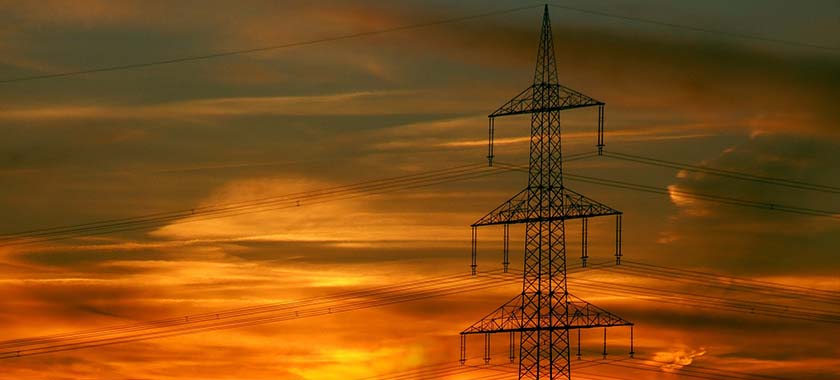Energy Trends: Sustainable Power, Digital Demands, and Politics
Awareness of energy market trends and forecasts can help businesses maximize energy income, tenant recoverables, and efficiency project paybacks. Start the year off right by optimizing expenses, consumption, and emission reductions. Position your business for success with this overview of three top 2017 energy trends.
1. Move to Sustainable Power
Renewables are rapidly gaining market share in the energy portfolio. As the sources for electricity generation continue to diversify, utilities are changing their business model. This leaves portfolio and property owners seeking their own sustainability solutions and ways to gain efficiencies.
Regulatory policies are also shifting as government bodies seek to ensure secure and reliable power supply. The impact of major regulatory moves in 2016 — SCOTUS’s stay of the Clean Power Plan, New York’s massive $5 billion Clean Energy Fund, SCOTUS’s ruling on FERC Order 745 — is yet to be seen. Certainly, the upward revision in renewable power forecasts — renewables in 2030 are projected to be around 35% higher than expected in 2011 (+14% vs last year) — suggests an optimism spurred by the adoption of the Paris climate agreement (COP21). Meanwhile, energy-efficient upgrades can help drive property owners optimism too.
2. Digital Demands Disrupt Market
The U.S. Energy Information Administration (EIA) predicts an increase of 56% in energy demand between 2010 and 2040. Grid operators looking to save on maintenance, distribution, and transmission are embracing smart alternatives. Virtual Power Plants (VPPs), for example, see the connected utility managing energy with intelligent software tools and systems that aggregate diverse and decentralized energy resources, remotely measure energy consumption of connected units, and manage temporary shortfalls in energy.
According to the U.S. Energy Information Administration (EIA):
- Total U.S. electricity generation is predicted to grow only slightly in 2017, up 0.7% from the 11,172 gigawatt-hours per day recorded at utility-scale plants in 2015.
- Natural gas will generate 33% of total utility-scale electricity generation
- Coal will generate a close second at 31%.
- Non-hydropower renewables are forecast to generate 9%
- Nuclear and hydropower should remain relatively unchanged.
Smart metering will also become more common. Advanced metering technology can provide:
- Automated meter reading replacing physical on-site reading
- Allow for dynamic pricing and enable consumers to make choices about when they use electricity, gas or water based on changing prices
- Integrate residential or commercial usage enabling more control of power consumption and usage reflecting demand levels.
These new technologies, including batteries and grid-embedded generation, are making a difference. Still, there remains uncertainty about the vulnerability associated with grid cybersecurity. The possibility remains that, even with the new opportunities afforded by this digital disruption, the interconnection of energy assets could be affected by future wars and cyber attacks.
3. Political Impact Reverberations
The impact of the incoming US Administration and Congress is yet to be seen. Deloitte’s Scott Smith, US Power & Utilities Leader, suggests “it may be more limited than some expect.” After all, the utility industry is already in a period of transformation with rising costs, new regulatory structures, and changing business models the new norm. Yet the shift in power in the White House could see reverberations, Smith suggested, in “key regulatory areas, such as derivatives oversight, renewable energy tax credits, and environmental protection, face uncertainty.”
All stakeholders are looking for ways to more effectively ensure safety, reliability, and affordability of energy supplies. This is going to put increased pressure on the power and utilities sector to address the rate-making process and to seek new energy resources, which can impact the business owner seeking to maximize energy income.
Takeaway
Keeping track of the global energy market is a challenge. Yet, businesses with a solid understanding of the opportunities in the always rebalancing energy supply and demand can benefit significantly.
Need a trusted partner with knowledge of both the regulated and deregulated sides of the electricity market? EnergyWatch helps commercial and corporate real estate portfolios simplify energy reporting, reduce energy expenses, and increase energy income. Our utility experts help you navigate the increasing complexity of the energy markets, sustainability reporting mandates, and commodity price volatility.
Sources:
Deloitte. (2016). Power and Utilities industry Outlook 2017. https://www2.deloitte.com/us/en/pages/energy-and-resources/articles/power-and-utilities-industry-outlook.html
Machina Research. (2016, January 8). Smart Metering: 1.9 Billion Connected Meters by 2024. https://machinaresearch.com/report/app-spotlight-smart-metering/
US Energy Information Administration. (2016, December 6). Short-term Energy Outlook. http://www.eia.gov/outlooks/steo/report/electricity.cfm
 Top Sustainability Trends to Watch in 2025
Top Sustainability Trends to Watch in 2025

 Log In
Log In








